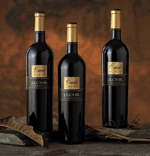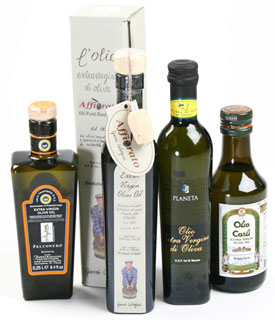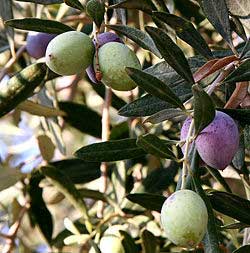Rad's Nuclear Grade Puttanesca
NOTE: This recipe contains anchovies, but you won't be able to taste them (not like on pizza). Omitting this key ingredient defeats the purpose of making puttanesca.
I have made puttanesca hundreds of times. Could eat it every night. It's quick, tasty & nutritious. This recipe is my own adaptation of the dozens I've read.
Puttanesca is a dirty word. It means .. well, you can read the lore about its unsavory origins at Wikipedia.
Beyond its taste, I like puttanesca cuz it's easy to keep most the ingredients on hand. For example, canned tomatoes, anchovies, capers, kalamata olives and pasta all keep well.
Even garlic keeps well. The only fresh ingredient you need is basil, but that's a luxury you can omit in a pinch. Best to buy a basil plant. Then you always have fresh basil on hand. (Snip, snip.)
Speaking of fresh basil, it will elevate your dish to a whole 'nuther level, so try to pick up a fresh bunch. It's the secret ingredient. (I buy everything from Trader Joes.)
Ingredients
- 28-oz can Italian/plum tomatoes (whole). Avoid regular tomatoes. They don't hold up well in cooking, and tend to make your sauce watery.
- 6-oz jar capers. Important to rinse well, as brine is very salty.
- 12-oz jar kalamata olives. Purists use unpitted olives. I use pitted, as they're easier to work with. If you get the unpitted variety (they *do* taste better), use the flat side of a knife to de-pit. Rule of thumb » 8 olives per serving/person.
 2-oz tin anchovies. Flat, not rolled. I've heard fresh, salted anchovies can be purchased at a good Italian deli, tho I've never been able to locate these legendary morsels.
2-oz tin anchovies. Flat, not rolled. I've heard fresh, salted anchovies can be purchased at a good Italian deli, tho I've never been able to locate these legendary morsels.- Italian red-pepper flakes (hot, spicy).
- Dried Italian seasonings, such as oregano, basil, thyme.
- Olive oil. Extra virgin. Fresher the better. So it's best to buy smaller bottles.
- Garlic. (To keep away the vampires.)
- Chunk of parmesan cheese. Purists frown on adding cheese, but I enjoy grating some atop my bowl. If you feel like $plurging, this is the place to do so, as the better-grades of parmesan can be pricey, tho make a noticeable difference. Use a coarse grater.
- Pasta. I prefer penne, with linguine a close second, depending on mood. De Cecco is best. A standard 16-oz box will stuff two people, feed three nicely. Feeding four might require you to add a salad, garlic bread, or Italian sausage, depending on appetite.
- Red wine is nice, but not necessary. Beer works, tho can be too many carbs with the pasta.
Instructions
 Start boiling a big pot of cold water. Don't cook with water drawn from your hot water heater. Cold water will take longer to boil, but be healthier. Use more water than you think necessary. (I use ~ a gallon.) Salt just before adding the pasta. Don't salt too heavily, as puttanesca tends to be salty enough.
Start boiling a big pot of cold water. Don't cook with water drawn from your hot water heater. Cold water will take longer to boil, but be healthier. Use more water than you think necessary. (I use ~ a gallon.) Salt just before adding the pasta. Don't salt too heavily, as puttanesca tends to be salty enough.
If you managed to pick up a bunch of fresh basil, chop it up, cover it, and put it aside. It will be the last thing you add. Chopping it now saves time later.
Same with parmesan cheese. Grate (coarsely) a small bowl-ful and put aside for later.
Chop 3 cloves garlic, sliced the thickness of dimes. (Garlic cut too thinly burns too easily, and becomes bitter.)
It's All About the Oil
My Italian friends tell me, "It's all about the oil." So that's where we'll begin. Take care to get the oil flavored properly (with garlic, red pepper & anchovy). Specifically, take care not to get it too hot, which can burn the garlic, and make it bitter.
 Add ¼- to ½-cup olive oil to sauce pot with sliced garlic. Deeper pots are better, cuz they helps minimize splattering. I use a sauce pot that's 10-inches wide and 4-inches deep. Shallower pots make messy stove-tops. (This is one of the biggest negatives of cooking puttanesca, or any pasta sauce.)
Add ¼- to ½-cup olive oil to sauce pot with sliced garlic. Deeper pots are better, cuz they helps minimize splattering. I use a sauce pot that's 10-inches wide and 4-inches deep. Shallower pots make messy stove-tops. (This is one of the biggest negatives of cooking puttanesca, or any pasta sauce.)
To the oil, add 6-7 shakes of dried hot red Italian pepper flakes. (Hungrier you feel, harder you shake.) Under medium heat, sizzle garlic until it JUST STARTS to to brown around the edges. As garlic browns, it becomes bitter, so don't get oil too hot.
Once sizzling begins, lower/remove heat. You can easily ruin Puttanesca by over-browning the garlic. Take this part slowly, and use the most caution here. If your garlic starts burning, add some tomato-juice from the can to cool the oil.
Once garlic is done (slightest brown edges), remove heat. After sizzling has stopped, add ¾-ths of your 2-oz tin anchovies to the oil. The whole 2-oz tin is too much. (Will taste fishy.) Half (1-oz) is not enough. (Not enough punch.) 1.5-oz seems just right.
I eat a few of the anchovy filets myself .. to reduce the amount to ~¾ tin. Do NOT add heat. You don't want to cook the anchovies in oil. Mash them into the oil with a fork (along with the garlic). This is the magic.
Now the Tomatoes
Add can whole Italian tomatoes (28-oz). Cut with knife into small chunks. (Use fork to hold stationary.) Add heat (high) stirring periodically. Once boiling, reduce heat (simmer) and add seasonings to taste. I keep it simple » a little oregano (which is strong), basil and thyme. The aroma will make your mouth water. Simmer 15-20 minutes.
Water should be boiling by now. Add salt and dump in pasta. Note time. Stir for first 30 seconds. Cook pasta 1 minute less than instructions say .. for al dente ("to the tooth"). Over-cooked pasta is mushy and can give you gas. Pasta can continue to cook after it stops boiling, so be careful not to overcook.
This is another place you can ruin your pasta, so watch the clock closely. This is also why I chop my basil and grate cheese at the beginning. So I don't lose track of pasta's cooking time while doing other things.
Olives and Capers at the End
After simmering for 15-20 mins, add well-rinsed capers and kalamata olives. Simmer 3-5 more mins, no more. Cooking too long after capers and olives have been added will make sauce taste less fresh and more salty. (Trust me.) Rule of thumb » 8 olives per person. Pitted olives can contain pieces of pits, so be careful when biting into them. (They're hard enough to bust a tooth.)
 At 1-minute less-than specified cooking time, remove boiling pasta from heat and pour out most of water into sink. Add a few cups of cold water to pot to stop to the cooking process. This will take ~ 30 seconds, so you will actually cook your pasta for ~30 seconds less than time specified.
At 1-minute less-than specified cooking time, remove boiling pasta from heat and pour out most of water into sink. Add a few cups of cold water to pot to stop to the cooking process. This will take ~ 30 seconds, so you will actually cook your pasta for ~30 seconds less than time specified.
At higher elevations, water boils at a lower temperature (and therefore cooks pasta slower). We live at sea level. If you live at a higher elevation, you'll have to cook slightly longer .. maybe an extra minute.
Drain pasta in colander and add a little sauce. This will prevent pasta from sticking and "pre-flavor" it. Some recipes suggest you add a little of the pasta water back into the sauce, but I don't do this, cuz it tends to make the sauce watery (when making small batches).
With pasta still hot, dump in serving bowls (I prefer big, over-sized, pre-heated bowls with a big spoon .. for the "shovel" effect), add sauce, cheese and freshly-chopped basil. The heat from the pasta and sauce will wilt the basil (the secret ingredient).
Go for it. Mangi!